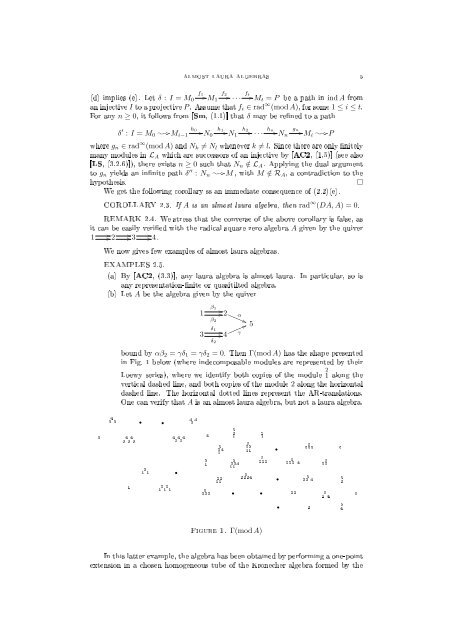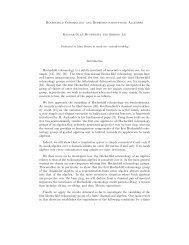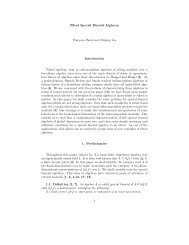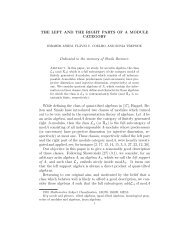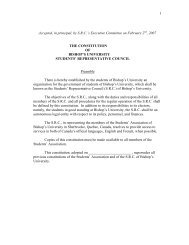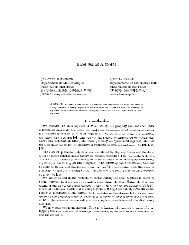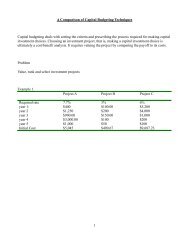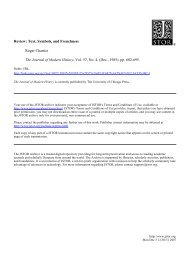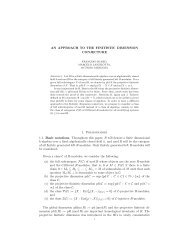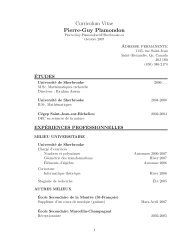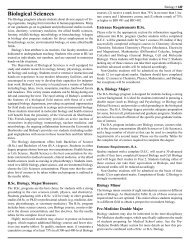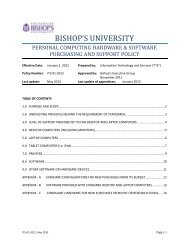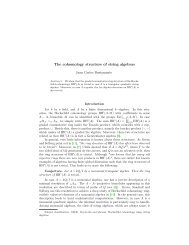Almost laura algebras
Almost laura algebras
Almost laura algebras
You also want an ePaper? Increase the reach of your titles
YUMPU automatically turns print PDFs into web optimized ePapers that Google loves.
ALMOST LAURA ALGEBRAS 5<br />
(d) implies (e). Let δ : I = M 0<br />
f 1<br />
M 1<br />
f 2<br />
· · · ft M t = P be a path in ind A from<br />
an injective I to a projective P . Assume that f i ∈ rad ∞ (mod A), for some 1 ≤ i ≤ t.<br />
For any n ≥ 0, it follows from [Sm, (1.1)] that δ may be rened to a path<br />
δ ′ : I = M 0<br />
h 0 h 1 h 2<br />
M i−1<br />
N 0<br />
N 1<br />
· · · hn g n<br />
N n<br />
M i<br />
P <br />
where g n ∈ rad ∞ (mod A) and N k ≠ N l whenever k ≠ l. Since there are only nitely<br />
many modules in L A which are successors of an injective by [AC2, (1.5)] (see also<br />
[LS, (3.2.6)]), there exists n ≥ 0 such that N n /∈ L A . Applying the dual argument<br />
to g n yields an innite path δ ′′ : N n<br />
M , with M /∈ R A , a contradiction to the<br />
hypothesis.<br />
□<br />
We get the following corollary ss an immediate consequence of (2.2)(e).<br />
COROLLARY 2.3. If A is an almost <strong>laura</strong> algebra, then rad ∞ (DA, A) = 0.<br />
REMARK 2.4. We stress that the converse of the above corollary is false, as<br />
it can be easily veried with the radical square zero algebra A given by the quiver<br />
1 2 3 4.<br />
We now gives few examples of almost <strong>laura</strong> <strong>algebras</strong>.<br />
EXAMPLES 2.5.<br />
(a) By [AC2, (3.3)], any <strong>laura</strong> algebra is almost <strong>laura</strong>. In particular, so is<br />
any representation-nite or quasitilted algebra.<br />
(b) Let A be the algebra given by the quiver<br />
1 β1 2<br />
<br />
α<br />
β 2<br />
<br />
5<br />
3 δ1 <br />
4<br />
<br />
γ<br />
δ 2<br />
bound by αβ 2 = γδ 1 = γδ 2 = 0. Then Γ(mod A) has the shape presented<br />
in Fig. 1 below (where indecomposable modules are represented by their<br />
Loewy series), where we identify both copies of the module 2 1 along the<br />
vertical dashed line, and both copies of the module 2 along the horizontal<br />
dashed line. The horizontal dotted lines represent the AR-translations.<br />
One can verify that A is an almost <strong>laura</strong> algebra, but not a <strong>laura</strong> algebra.<br />
3<br />
4<br />
3 3<br />
4 4<br />
3 3 3<br />
1<br />
• •<br />
2<br />
1 1<br />
2 2<br />
1 1 1<br />
4 4 4<br />
3 3<br />
•<br />
4 4<br />
3<br />
4<br />
2<br />
1<br />
5<br />
222<br />
5<br />
24<br />
1<br />
22<br />
11<br />
5<br />
2<br />
1<br />
5<br />
224<br />
11<br />
•<br />
1 2<br />
5<br />
2 21<br />
1<br />
5<br />
2224<br />
5<br />
222<br />
•<br />
•<br />
•<br />
•<br />
5<br />
222 4<br />
22<br />
222<br />
5<br />
5<br />
22 4<br />
2<br />
5<br />
22<br />
2 5 4<br />
2<br />
5<br />
2<br />
5<br />
4<br />
5<br />
Figure 1. Γ(mod A)<br />
In this latter example, the algebra has been obtained by performing a one-point<br />
extension in a chosen homogeneous tube of the Kronecher algebra formed by the


